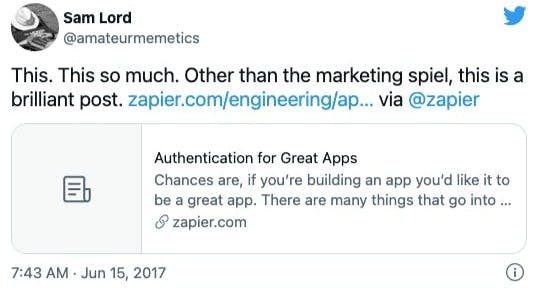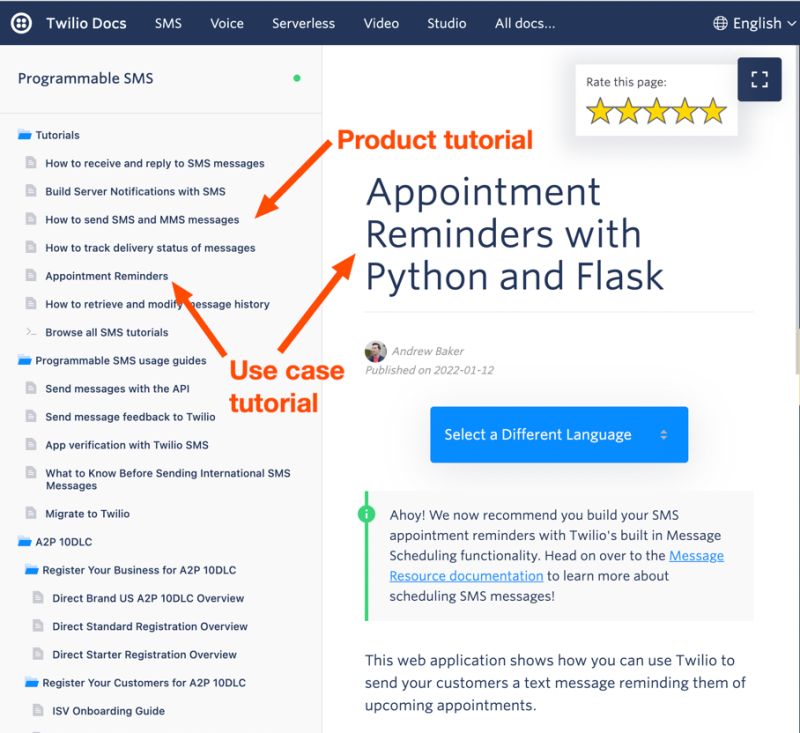Most of your technical audience isn’t looking for your product. They’re doing their own work, communicating with their team, and doing their best to hit milestones. This involves researching, educating themselves, and even finding entertainment within content around the web. But they certainly aren’t thinking about being in your funnel.
Technical products need marketing, but the audience doesn’t want it to feel like marketing. As a former coder, I understand that skepticism firsthand. As a former journalist, I’ve worked against it in an effort to discover the topics technical audiences want to read.
And as a marketer—I call myself an accidental marketer—I’ve found both help and hindrance in the classic marketing funnel.

Some argue that you can’t map your technical audience into funnel stages. The trust and time required have far too much nuance to be easily broken down into stages.
Where this simplified marketing funnel can be useful is in how you think about your technical content. In this post, we’ll look at three stages of the funnel from a content perspective. You’ll see how forcing bottom-of-funnel (BOFU) topics too early can backfire with your technical audience. Similarly, top-of-funnel (TOFU) topics are often too general to benefit your product. Finally, most of the post will focus on the middle-of-funnel (MOFU), where your juiciest opportunities reside.
BOFU: Too Much Product Talk Erodes Trust
Bottom-of-funnel content is where you make the case for your product. It shows the technical benefits your audience will care about and may even compare it to competitors. Most readers know not to take this sales content too seriously. Technical audiences are especially skeptical of claims and comparisons coming from this type of content.
One of the biggest technical content mistakes is to only write about your product. Browse any developer forum and you’re bound to see complaints about promotional content. I’ve written deep, educational pieces with trace mentions of a product that were flagged by technical readers.

Unfortunately, BOFU content is often the most obvious in your content calendar. It even fits some of the recommendations you might find us make:
Build {use case} with {product}
Too often, we’ve seen content teams expect this kind of BOFU content to attract and convert new visitors. That’s not its job.
Yet, they’ll publish dozens of these and wonder why they don’t attract developers. So, they’ll look to promote them in more places, which only serves to have more of your potential audience see your tactics as promotional.
Your content should build trust in your technical solution and your company. When your product is all you talk about, you don’t seem trustworthy.
To avoid this problem, some companies overcorrect to the other end of the funnel.
TOFU: The Curse of the Generic
Top-of-funnel content is where you gain awareness from an audience that knows nothing about you. It’s broad, so you can reach the maximum number of people. Your goal is to have a portion of this audience return to get to know your content, your company, and hopefully your product.
The TOFU content ocean is wide and deep. Lots of room to drown.
Let’s say you’ve attracted some interest from Python developers and they love your product. The TOFU content approach would be to go broad on Python: introductions, library overviews, error codes, and any keywords that include “python.” You might even accidentally write a couple of posts about snakes—but they’re getting traffic!
Now you’re helping new Python developers write their first scripts, enabling frontend coders to build a backend, and solving a common error in Django, a Python framework, among many other topics. The only problem is you really aren’t sure who the audience is, other than they care about Python.
You’re suffering from the curse of the generic.
A TOFU focus can lead to such general content that it means nothing to the specific audience you want to reach. So they’re unlikely to stick around for you to build trust.
Companies that put most of their efforts toward TOFU content are likely practicing vanity-driven developer marketing. And, in most cases, I’d guess that they’re struggling with some of the metrics that matter more, like signups and customers.
If this is sounding like Goldilocks, it’s because she’s comfortably asleep in the middle of the funnel.
MOFU: Balance Their Problem and Your Product
Middle-of-funnel content, as the name suggests, sits between the more general top-of-funnel and product-specific bottom-of-funnel. Traditionally, it creates a bridge between awareness and conversion. With the right approach, it can also attract way more qualified visitors.
The MOFU content approach that we recommend is to focus on problems before your product. In many cases, you shouldn’t even mention your product at all. Here, MOFU performs a bit of TOFU’s role, but it does a much better job.
MOFU content is much more specific, which means the audience it attracts is more likely to need your product’s solution. Developer problems unlock developer benefits, which can lead to interest in your product.
Consider this Twilio tutorial framed around a use case, making it a great example of MOFU content:

MOFU topics are rarely within documentation, which is why we see links to product-focused BOFO tutorials in the sidebar. Those are more useful for somebody who already knows what product they want to use.
The appointment reminders tutorial is one of many ways SMS can be used. It probably attracts developers, like you might expect from TOFU content. But because it covers a use case and connects it naturally to a product, it can perform some of the duties of BOFU content.
Sitting between TOFU and BOFU, it’s natural to see a little bit of each within MOFU content. If you can get the ratio right, you might need little else to attract the right audience.
You also can gain trust with MOFU content, which digs into specific problems with product-agnostic solutions. This “developer content mind trick” can do the work to convince a skeptical audience that you know how to solve their problem—without ever making those product claims that come across as promotional.
Here’s the bad news: this is the hardest content to produce.
It requires you to understand the technical problems, explain your company’s viewpoint without product spotlights, and encourage the audience to solve the problems on their own.
Technical Content Strategy Decoded
Digging into our process for great middle-of-funnel content can’t possibly fit in a blog post. It would take an entire book to cover the patterns to follow, the questions to ask, and how to translate those to your content calendar.
Here’s the good news: I wrote that book, Technical Content Strategy Decoded.
You’ll learn how to uncover the problems your technical audience cares about, why you’re likely focused on the wrong numbers (and which ones matter), and the framework we use to reach more of the right technical audience.